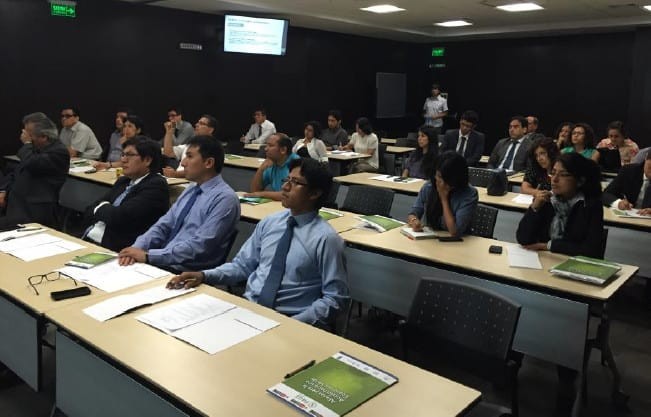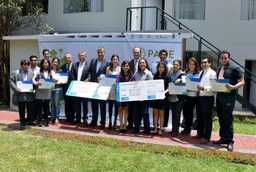A consultation workshop with key ministries and planning institutions was held from 8 to 12 February 2016 under the auspices of the Green Growth Assessment, supported by PAGE and led by “La Universidad del Pacífico”. Participants discussed policy proposals for greening agriculture, transportation and the forestry sectors as well as possible means for implementing the policies, data availability, indicators for monitoring progress, and impact and outcomes as a holistic model. This workshop is the result of a long and wide consultation process facilitated by PAGE in which all relevant stakeholders have participated.

For the agriculture sector, stakeholders’ discussion aimed to find “green” solutions to improve access to water, and to deal with the vulnerability of the sector to climate change and crop diseases. Provision and availability of water affect the livelihoods and the production of more than 300,000 families from small and medium farmers. Low innovation affects the sector as only 14% the agriculture area has access to high quality seeds. Green policies for improving water access for small and medium farmers include increasing public investments by 2019 to a total area of 129,200 ha under efficient irrigation systems. One measure to enhance the resilience of the sector specifically to climate change is increasing private investments on certified seeds with a higher resilience to crop diseases and the impacts of climate change.
For combating deforestation and guaranteeing forest conservation, stakeholders highlighted the opportunities offered by the existence of degraded lands that are in an idle state. These could be used for reforestation and regeneration through productive activities, sustainable management plans, income-generating activities and to improve the quality of life for residents living in these areas, increasing the volumes of carbon sequestration. In fact, between 2001 and 2004, 749.013 hectares of forest – representing 45.3% of total deforestation in that period – were lost. Another aspect is the low value of the national forest production: only 11% of the timber production went through some process of transformation in 2012.

When discussing about the greening of the forestry sector, the workshop brought together experts from UN REDD and GGGI in Peru. UN REDD is supporting the implementation of the “National Forest Conservation Plan” with a special focus on forest conservation. GGGI’s work in Peru aims to help implement green growth by fostering the development of an economically viable forestry sector that generates socially inclusive benefits and optimal ecosystem services, while at the same time preserving natural capital. The consultation workshop created the space to discuss green solutions to the problems of high levels of deforestation in the Amazonian forest in Peru, given the low value added generated by the forestry sector despite the expanse of primary forest. As the value of the forest is underestimated, numerous operators transform forestry areas to agriculture or illegal activities, generating greenhouse gas emissions, weakening the natural resources and reducing water flows. PAGE, UN REDD and GGGI agreed on a joint effort to further refine the green policies to be simulated with the T21 model during this exercise with the aim of better capturing the inter-sectoral connections.
On transportation, participants highlighted the pace of growth of those using private motor vehicles, especially in urban areas, which increases levels of congestion and environmental pollution. Moreover, the current public transport system is getting older, causing a poorer quality of service and, energy inefficiency with problems of safety in Lima also noted. Approximately, $500 million is lost annually in operating costs due to the inefficiencies in the urban transport system with small vehicles representing 82% of the supply of public transport. Green policies to address this problem are focused on both the improvement of the public transport system in the capital and the use of more energy efficient vehicles.
On the final day of the workshop, the T21 model for Peru and the green policies proposed by the sectors were presented to the Ministry of Economy and Finance with the aim of encouraging a debate on the financial implications of the proposed policy changes. Once concluded, the green growth assessment will inform decision policy making processes related to the design and adoption of national and sectoral policies that will contribute to a greener, and more inclusive economic model in Peru.



